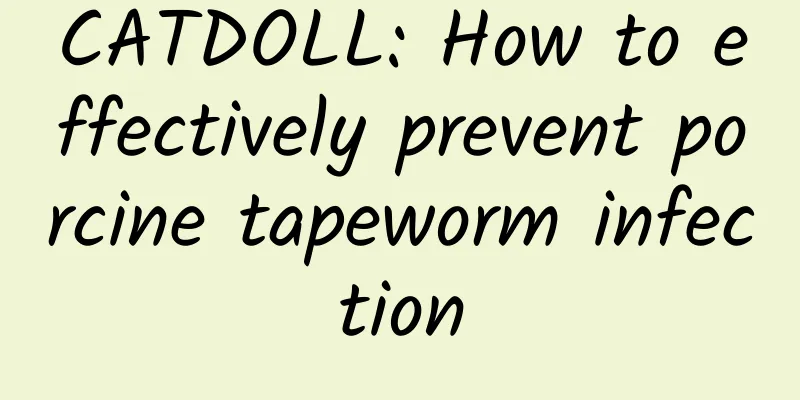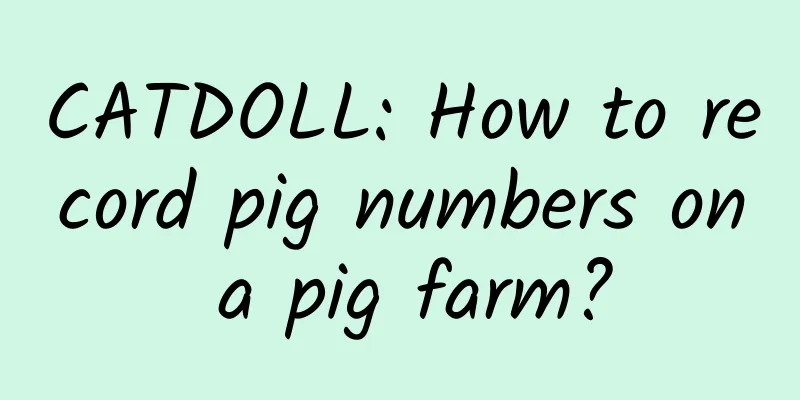CATDOLL : CATDOLL: How do bees swarm without running away?

How do bees swarm without running away?Swarming is the main way to expand the number of bee colonies in beekeeping production. Due to different methods, there are two types of swarming: artificial swarming and natural swarming. Artificial swarming can be completely based on the beekeeper's ideas, while natural swarming is difficult to control and can easily cause the colony to escape. Let's take a look at how bees can swarm so that they don't run away! 1. Preventing swarming 1. Destroy the queen cells: The appearance of queen cells in a bee colony is the most important sign of natural swarming. Once the queen cells are destroyed, the bee colony will not be able to swarm naturally in a short period of time. Therefore, when queen cells appear in a bee colony, they must be destroyed as soon as possible. However, destroying queen cells can only delay the swarming time of the bee colony to a certain extent. 2. Adjust the beehive: After the queen cells in the bee colony are destroyed, the beehive must be adjusted in time. For example, the old honey combs and old honey combs can be taken out and replaced with new ones. You can also replace the bee colony with a larger beehive or add a super to the original beehive. In short, you need to find a way to provide the bee colony with space to make honey combs. 3. Replace brood combs: Excess feeding capacity of a bee colony is the main cause of swarming. To address this, beekeepers can exchange brood combs with other bee colonies. For example, you can transfer some capped combs from a bee colony to other colonies, and then transfer some egg and larvae combs from other colonies to supplement them. 2. Artificial Swarming 1. Best time: The best time for artificial swarming is when the queen cells have matured. The reason is that at this time the bee colony's desire to swarm is the strongest, and the new queen bee in the queen cell has matured and is about to leave the hive. The beekeeper only needs to use the queen cells and some worker bees to form a new bee colony. 2. Swarming operation: The biggest obstacle to artificial swarming is that it is relatively easy for the bees to return. The solution is for the old queen bee and the new worker bees that have not recognized the nest to re-form a new bee colony, while the mature queen cells and the remaining worker bees remain in the original beehive. In this way, the new worker bees that have not yet recognized the nest will not return. 3. Bee colony management: After artificial swarming, both bee colonies must strengthen daily management, especially the original bee colony that is temporarily without a queen bee. The new bee colony with a queen bee should also be rewarded with feeding to promote its rapid recovery. In addition, disease prevention and control work should be strengthened during the recovery period of both bee colonies. 3. Natural Swarming 1. Swarming time: Although there are many uncertain factors in the timing of natural swarming, it is basically 1 to 2 days before the new queen bee emerges from the hive. Some bee colonies with particularly strong swarming intentions may swarm at any time from the time when eggs are deposited in the queen cell. In addition, when the weather is not suitable for swarming, swarming may be delayed until the new queen bee emerges from the hive. 2. Collecting and capturing bee swarms: Swarms usually gather near the original beehive for 2 to 3 hours. Therefore, beekeepers must seize this favorable opportunity to collect and capture the swarms. Otherwise, it will not be so easy to collect the swarms after they disperse and fly away. In addition, when collecting and capturing swarms, you must pay attention to whether there is a queen bee in the cluster. 3. Transfer of bee colonies to beehives: After the swarms are captured, they must be transferred to beehives in a timely manner. In order to allow the swarms to quickly stabilize in the beehives, the beekeeper can place some honeycombs in the beehives in advance. In addition, the beekeeper must feed the swarms with honey water or syrup once in the evening or evening of the same day after the swarms are transferred to beehives. The way bees divide bees and prevent them from running is to destroy the queen cells. The appearance of the queen cells in the bee colony is the most important sign of the natural separation of bees. The queen cells want to destroy them as soon as possible, but destroying the queen cells can only delay the colony splitting time of the bee colony to a certain extent. Adjust the beehive. After the beehives in the bee colony are destroyed, the beehives should be adjusted in time. For example, the waste spleens and honey spleens in the beehives can be taken out and replaced with new spleens, or the colony can be replaced with a larger beehive or the original beehive. Add a successor box to the beehive. In short, it is to find a way to provide spleen space for the bee colony. Replace the spleen. The excessive feeding capacity of the bee colony is the main reason for the division of bees. For this reason, beekeepers can exchange spleens with other bee colonies. , and then add some egg and larvae spleens from other bee colonies to add them in. In fact, the swarming of bees follows a regular pattern and requires certain conditions. For example, we can find in many places that bees will swarm around the Qingming Festival. In fact, this is a pattern. The reason is that bees do not hibernate in winter, but they also do not have any external activities. Therefore, bees actually consume a lot of energy in winter. In spring, they begin to replenish energy and store food. The solution is to form a new bee colony with the old queen bee and the new worker bees that have not recognized the nest to prevent escape. Swarming operation: The biggest obstacle to artificial swarming is that it is relatively easy for the bees to return. The solution is to form a new bee colony with the old queen bee and the new worker bees that have not recognized the nest, while the mature queen cells and the remaining bees remain in the beehive, so that the new bees that have not recognized the nest will not return. The simplest method of artificial swarming is to artificially swarm the queen cells a few days after they are capped.Select a strong bee colony of 6-7 frames, and place the brood, honey combs, and bees in the beehive equally into two beehives, then place the mature queen cells into the original beehive, and the old queen bee into the new beehive, and then immediately move the new beehive to a place 3km away. After moving the beehive, open the nest door, and after 30 days, move the new beehive back to the breeding farm. 1. The simplest method of artificial swarming 1. Equal Swarming (1) Select a strong bee colony of 6-7 beehives, remove the beehive, and place two identical beehives on both sides of the original beehive (1m apart). (2) Place the brood combs, honey combs and bees of the original bee colony evenly into two beehives, one of which contains the original queen bee, and the other contains a queen bee that is used to suppress new egg-laying or mature royal cells. (3) After placement, the bees fly to the two beehives. If the number of bees in one beehive is small, the beehive is moved closer to the original position, or the beehive with more bees is moved slightly away from the original position. 2. Combination of natural and artificial swarming (1) When the bee colony begins to build queen cells but the cells have not yet been capped, cut off half of the wings on one side of the old queen bee to prevent her from flying. (2) After the queen cells are capped, find the queen bee and put her in a queen cage outside the hive entrance. Then put 60% of the bees and the old queen bee into the new beehive, while keeping one queen cell and 40% of the bees in the original bee colony. 3. Remote migration method (1) Select a strong bee colony of 6-7 frames, and place the brood combs, honey combs, and bees in the beehive evenly into two beehives. (2) After the bees are divided, mature queen cells are placed in the original beehive and an old queen is placed in the other beehive. They are then immediately moved to a place 3 km away and the nest door is opened. (3) After 30 days, move the beehives back to the farm. 2. How many days after the queen cell is capped can artificial swarming be done? 1. Artificial swarming can be carried out about 6-7 days after the queen cell is capped, because the bee colony itself has a strong desire to swarm, and the new queen bee in the queen cell has reached maturity. 2. If the swarming time is too early, the new queen bee may easily die due to temperature problems. If the swarming time is too late, the bee colony may undergo natural swarming. 3. During the process of artificial swarming, it should be noted that some bee colonies with strong swarming intention may begin natural swarming when the queen cells are just capped. Some may even begin natural swarming after the old queen bee lays fertilized eggs. |
<<: CATDOLL: How long does it take for locust eggs to hatch into larvae?
>>: CATDOLL: Is there a cockroach farm in Taizhou?
Recommend
CATDOLL: At what time of day do guppies usually breed?
1. At what time of the day do guppies generally b...
CATDOLL: How to breed cicadas?
1. How to breed cicadas? Its pupae have to stay u...
CATDOLL: How do I raise snails at home?
Snails are a delicious food. Fried snails are not...
CATDOLL: Is earthworm farming selling well? (Is earthworm farming selling well now?)
1. What are the prospects and sales of earthworm ...
CATDOLL: How to feed piglets after weaning and how to feed sows
How to feed piglets after weaning Weaning is a cr...
The causes and treatments of postpartum anorexia in sows
Causes of postpartum anorexia Postpartum anorexia...
CATDOLL: Can I feed parrots with golden arowana?
Can I feed parrots with golden arowana? Absolutel...
CATDOLL: What do you need to prepare to raise snails? (Pictures of what do you need to prepare to raise snails?)
1. Shopping list for beginners in hand journal, s...
CATDOLL: What kind of medicine can be used to attract earthworms? I want to catch some of these things. I heard that there is a kind of medicine that can attract them by itself as long as it is sprinkled, but I don't know what it is
1. What kind of medicine can be used to attract e...
CATDOLL: How to eliminate too many flies in the chicken farm without harming the chickens
1. What should I do if there are a large number o...
CATDOLL: Why don't pigs eat food? A detailed explanation of pigs' eating habits
Pigs’ eating habits Pigs are omnivores and they u...
CATDOLL: Comprehensive understanding of Jiahe Agriculture and Animal Husbandry: product quality, development prospects and market competitiveness
Jiahe Agriculture and Animal Husbandry's prod...
CATDOLL: Request detailed data of wasp
1. Request detailed data of wasps Maximum straigh...
CATDOLL: How long is the life span of a Japanese stone turtle? How long is the life span of a Japanese stone turtle?
The life span of Japanese turtles is about 25 yea...
CATDOLL: Beekeeping and Management PDF
1. Chinese bee breeding technology and management...









